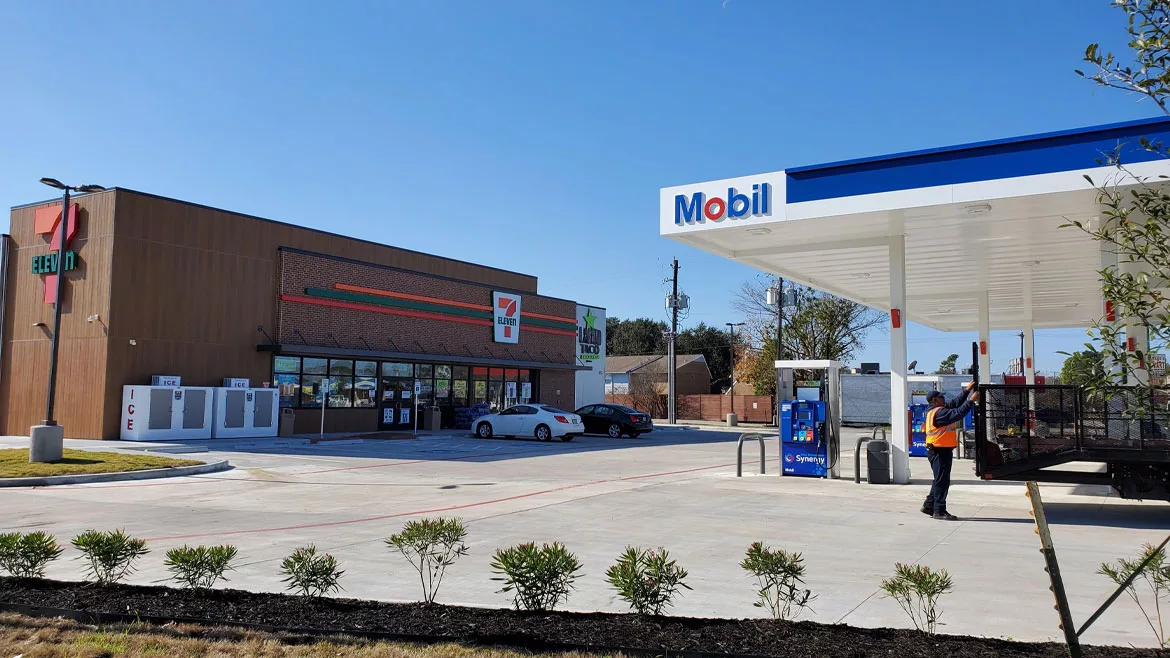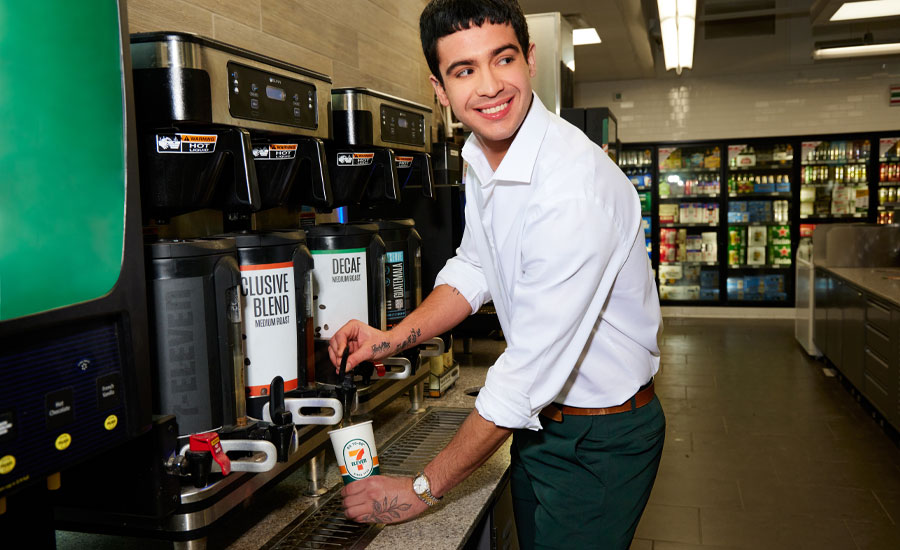In-store sales fuel growth for convenience store channel
Sports drinks, energy drinks witness sales increases

Image courtesy of 7-Eleven Inc.
Described by Forbes Magazine as the most commercially successful magician in history, illusionist and magician David Copperfield, is quoted for having said: “The real secret of magic lies in the performance.”
Where performance is considered key in many endeavors, when it comes to the convenience store channel, experts note that the channel’s in-store sales are playing a significant role in these retailers’ success.
“As traditional commuting and shopping behaviors continue to return to pre-pandemic levels, convenience stores had record in-store sales in 2022,” says Jeff Lenard, vice president of strategic industry initiatives at Alexandria, Va.-based National Association of Convenience Stores (NACS). “Total convenience industry sales were $906 billion, of which $301 [billion] were from in-store sales.
“Convenience stores, which sell an estimated 80% of the fuel purchased in the country, saw fuel sales increase 41.2% reaching $603 billion,” Lenard continues. “The average basket — what customers spend per visit — increased 4.9% to $7.52.”
Pooja Lal, foodservice analyst at Mintel, Chicago, points to the foodservice convenience channel as showing steady growth year-over-year (YoY) with expectations of leveling out.
“Mintel data predicts 2023 sales are expected to reach $51.1 billion with growth of 5.5% versus last year,” she says. “C-stores will continue to experience sales growth in foodservice channels as consumer’s lean on c-stores for away-from-home meals and snacks through both packaged and [ready-to-eat] RTE formats.”
Foodservice shows significant gains
Although convenience stores are facing challenges such as a decrease in commuting replaced by work from home, labor shortages and inflation, NACS’ Lenard points to the foodservice category as crucial to the channel’s growth.
“Gas prices jumped 34% in 2022 as a result of the Russian invasion of Ukraine, and the merchandise CPI increased 7.9%, which contributed to some of the sales growth in 2022,” Lenard explains. “But there was real growth, especially because of foodservice, a category that encompasses prepared food and frozen, cold and hot dispensed beverages.
“Dispensed beverages are about 25% of the foodservice category, which represents 25.6% in-store sales and 36.1% of in-store gross profits,” he continues.
Although low prices motivate shoppers, Mintel’s Lal suggests that transparency around nutritional labels and ingredients can further drive food and drink sales for these retailers.
“Almost half of U.S. consumers will be motivated to visit a convenience store on the basis of low prices, with one-third of consumers seeking lower priced food/beverages,” Lal says. “Offering food and beverage items that provide more natural ingredients, freshness, and quality will keep consumers returning and relying on c-stores and the convenience they bring forward.
“Forty-percent of consumers agree convenience stores should offer healthier food/drink options,” she continues. “[Meanwhile], 43% of parents agree food and beverage quality determines which convenience stores they visit most often.”

Image courtesy of 7-Eleven Inc.
Thriving beverage categories
As beverage trends impact the channel, experts highlight various drink categories and trends impacting in-store sales.
“There is a lot of subcategory blurring going on now,” NACS’ Lenard says. “Meanwhile, companies that have made their mark as energy drink companies are getting into coffee, and coffee companies are getting into the energy space.
“There’s also a big trend with influencers promoting products within the category, like the Prime energy drink promoted by YouTube stars Logan Paul and KSI,” he continues.
Although most category sales and incremental growth came from two subcategories: “carbonated soft drinks (12.5% YoY gross profit) and energy drinks (15.3% YoY gross profit),” Lenard points to sports drinks as having significant growth in 2022, with a 20.7% sales increase and 23.8% gross profit increase.
However, “coffee sales haven’t quite come back to pre-pandemic levels but have improved from the sales in 2020 and 2021,” Lenard says. “While the morning rush has taken a hit, there is still a second mini-morning rush around 10:30-11, when those working at home are looking to get out of the house and make human contact for a few minutes.”
Mintel’s Lal suggests retailers should include made-to-order menu items and coffee bars, and consider offering customizable options and a variety of coffee add-ins that show versatility to meet consumers’ needs.
“Based on Mintel’s predictions, hot dispensed beverages are making a comeback post-pandemic,” she says. “Pairing hot dispensed beverages with more premium-crafted, and customizable beverages will help drive appeal.”
On the beer side of the aisle, NACS’ Lenard notes that Mexican lagers showed strong sales increases in 2022. Meanwhile, non-alcohol beer has almost doubled from 2020 to 2022, he says.

Image courtesy of Speedway
Strategies for today, tomorrow and beyond
Although convenience stores are associated with filling up on gas, experts highlight how operators can employ strategies that further encourage consumers to shop in-store.
“This year, a record 59% of customers filling up at the pump said that they also went inside the store,” NACS’ Lenard notes. “Overall, 43% of customers who come inside the store buy a drink (packaged or dispensed) and 13% purchase beer or wine.
“Customers who buy drinks are more likely than the average customer to also buy a snack; those who buy beer are more likely to also buy a sandwich or meal,” he continues.
Aside from traditional marketing that focuses on fuel rewards, Mintel’s Lal suggests that operators should focus more on utilizing rewards programs that share exclusive deals like BOGOs and cross promotions that encourage in-store purchases.
“Operators should continue to build relationships through loyalty rewards programs to boost repeat visitation and purchase frequency,” she says. “Incentivize customers to join by providing bonus rewards at the time of joining and offer special deals on in-store food and drink purchases. Cross-promotions and bundled offers will help drive average basket size.”
In addition to marketing focused on in-store offerings, Lal stresses the importance of finding balance between health and indulgence in food and drink.
“Consumers are seeking [better-for-you] BFY, health-forward food and drink items to fit their lifestyle needs,” she says. “Vast options that capture both health and indulgence will provide variety for differing consumers.”
Looking ahead, Lal points to the revolution of electric vehicles (EVs) as potentially posing challenges to the future of convenience stores.
“As the demand and interest in EVs continue to grow, operators must remain agile to account for customers’ changing needs,” Lal explains. “Consider offering charging stations to EV car owners who can still lean on c-stores for convenience, encouraging them to purchase food and drink as they wait for their car to charge.”
NACS’ Lenard suggests that, no matter what trends the future presents, operators should simply remain focused on consumer needs.
Convenience stores ultimately sell convenience that is manifested by a fill up; an on-the-way pit stop to use the bathroom or ATM; or a quick snack, drink or meal,” he says. “As long as they focus on what the customer wants — which is not always easy because consumers continually redefine convenience — convenience retailers should have a bright future.”
Looking for a reprint of this article?
From high-res PDFs to custom plaques, order your copy today!




